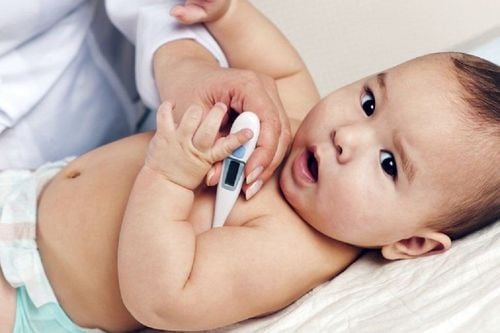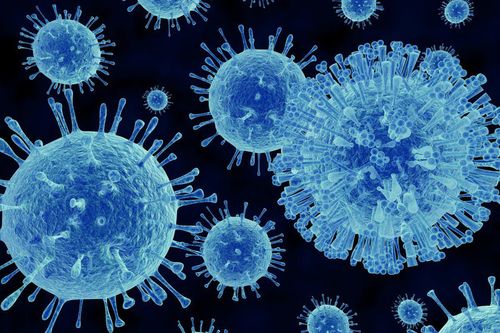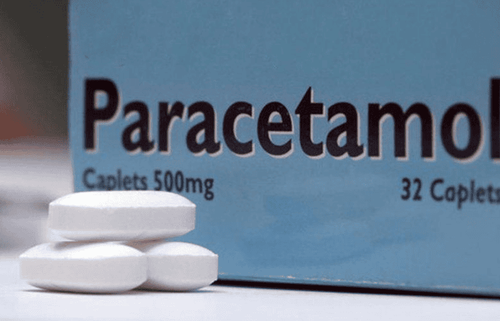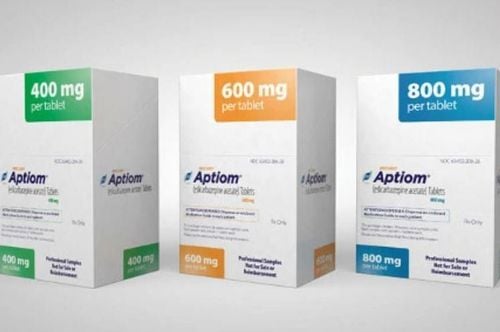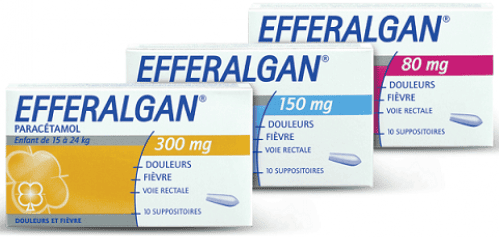This is an automatically translated article.
The changing weather creates favorable conditions for viruses (viruses) to develop, causing outbreaks of viral fever in children with low resistance. With a significant increase in the number of patients, whether the viral fever will have a rash and when will the typhus go away is a matter of concern to many parents.The article is professionally consulted by Master, Doctor Nguyen Thi An - Pediatrician - Neonatologist - Department of Pediatrics - Neonatology - Vinmec Ha Long International General Hospital.
1. What is viral fever? Viral fever, also known as viral infection, refers to a condition in which a child has a fever for the first few days, but the exact disease has not been identified. Symptoms can be prolonged or repeated, taking fever-reducing drugs still cannot help parents bewildered, not knowing what their child has.
Viruses can be the cause of dengue fever, or respiratory infections, colds, flu, typhus, even hand, foot and mouth disease ... Therefore, doctors often schedule pediatric patients to have a follow-up examination or treatment. Do some more tests to make an accurate diagnosis. If the cause of the fever cannot be found, and at the same time excludes a bacterial cause (tonsillitis, otitis media, urinary infection, ...) and the test results do not show an infection, the doctor will keep it. diagnosis of viral infection.
Answering the question when will the typhus fever go away, doctors said that viral fever can go away on its own after 5-7 days, but the manifestation of fever in children is very much in need of care. Some children exposed to specific viruses such as H1N1, H5N1, H7N9 can develop severe pneumonia, progress to respiratory failure and even death if not treated promptly.
2. Common Symptoms Common signs of a child being infected with the virus include:
High fever: Very common, a warm head, or a fever of 38 - 39°C, even 40 - 41°C. For children under 5 years of age, if a high fever does not come down in time, it can cause convulsions, increase in mucus, lead to respiratory failure, and lack of oxygen to the brain. When the fever is low, the child will be awake and live normally; Body aches: When older children have muscle pain, they will complain of pain all over their body, while young children may stir and cry; Headache: Some pediatric patients may have a headache but remain alert; Inflammation of the respiratory tract: With manifestations such as cough, runny nose, sneezing, red throat... Gastrointestinal disorders: Usually appears if viral infection of the digestive tract; Lymphadenitis: Some children swollen lymph nodes in the head, face, behind the ears... with small size and no pain. If there is swelling in the area just in front of the ear, it may be suspected that you have mumps; Conjunctivitis: Eyes may be red, watery, or watery. If a rash is present, it may be suspected that measles rash is present; Vomiting: Vomiting repeatedly, mostly after eating.
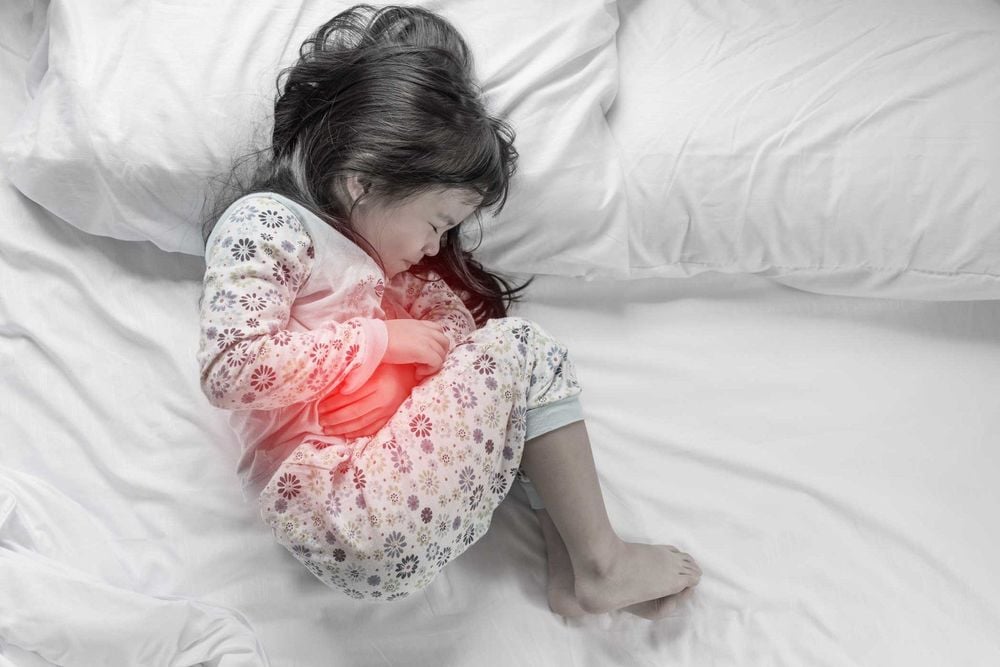
Sốt siêu vi có thể gây tình trạng rối loạn tiêu hóa cho trẻ
In rare cases, viral fever can lead to serious complications such as pneumonia, encephalitis or intussusception.
3. Treatment of typhus fever Almost all diseases caused by viruses have no specific treatment, mainly symptom control. Therefore, the measures commonly used for viral infections in children are:
3.1. Reduce fever Remove blankets, clothes, only let the baby wear light and thin clothes to radiate body heat; Take acetaminophen (paracetamol) when fever is above 38°C. The drug has a quick effect after 30 minutes and lasts from 4-6 hours, with few side effects. Note the appropriate dosage according to the age of the pediatric patient; 3.2. Cool Wipes Wipe the body with warm water while waiting for the medicine to take effect, or when the child is uncomfortable or has a convulsion; Only apply to children from 6 months to 5 years old, do not cool babies to avoid hypothermia; Avoid using cold water or ice because it will cause blood vessels to constrict, unable to radiate heat; Use 4 towels soaked in warm and moist water, cover the armpits and groin, add 1 towel to wipe all over the body; Check baby's temperature every 15 - 30 minutes, stop cooling when below 38°C. 3.3. Treatment of high fever and convulsions Place the child on his or her side to allow mucus to flow out, avoiding aspiration into the lungs; Inserting acetaminophen into the anus; Wipe the body with warm water; Take the patient to a medical facility.

Sử dụng thuốc acetaminophen nhét hậu môn xử trí sốt cao co giật
In terms of nutrition, children should eat liquid, easy to digest and nutritious foods to provide adequate nutrients for the baby.
3.5. Prevent superinfection Clean, bathe with warm water and keep the baby in a warm, airtight room; Eye drops, nose drops with physiological saline 0.9%; Isolating, not sending children to school to avoid spreading the disease into epidemics; 3.6. Things not to do It is important to treat and care for children when they have a fever, but parents should also pay attention not to do the following:
Wrap the child up; Abstain from eating and drinking; Squeeze lemon, pour lemongrass or medicine into the mouth when the child is having a convulsion; Do not shave the wind, cut the ceremony, and any other word of mouth that has not been scientifically proven. 3.7. When to take the child to the hospital? In some of the following cases, the mother needs to take the child to the medical center for examination and treatment:
High fever that is difficult to bring down; Fever for more than 2 days; Children under 2 months of age with fever; Fever with petechiae, or erythema of vesicles on palms and feet, and any other abnormality. 4. Preventing viral typhus during the change of seasons Some tips to protect children from viral infections during the change of seasons are as follows:
Do not let children come into contact with sick people; Keep your baby warm enough; Do not let children soak in the rain, play in the sun, swim or bathe for too long; Ensure hygienic eating, clean and cool living environment; Vaccinations against influenza, encephalitis, chickenpox, measles... fully according to age.

Cha mẹ nên cho trẻ tiêm chủng đầy đủ các mũi vắc-xin giúp phòng ngừa sốt siêu vi phát ban lúc giao mùa
For children to be healthy and develop well, it is necessary to have a nutritious diet in terms of quantity and quality balance. If children are not provided with adequate and balanced nutrients, it will lead to diseases of excess or lack of nutrients, which adversely affect the comprehensive development of children in terms of physical, mental and motor skills.
Children who do not eat properly are at risk of micro-mineral deficiency causing anorexia, growth retardation, malabsorption,... If they notice the above signs, parents should supplement their children with products. The supplement contains lysine, essential micro-minerals and vitamins such as zinc, chromium, selenium, and B vitamins to help fully meet the nutritional needs of children. At the same time, these essential vitamins also support digestion, enhance nutrient absorption, help improve anorexia, and help children eat well.
Parents can learn more:
Signs of zinc deficiency in children
Micronutrient deficiency and failure to gain weight in children
Please regularly visit Vinmec.com website and update useful information to take care of your child. Take care of the baby and the whole family.




